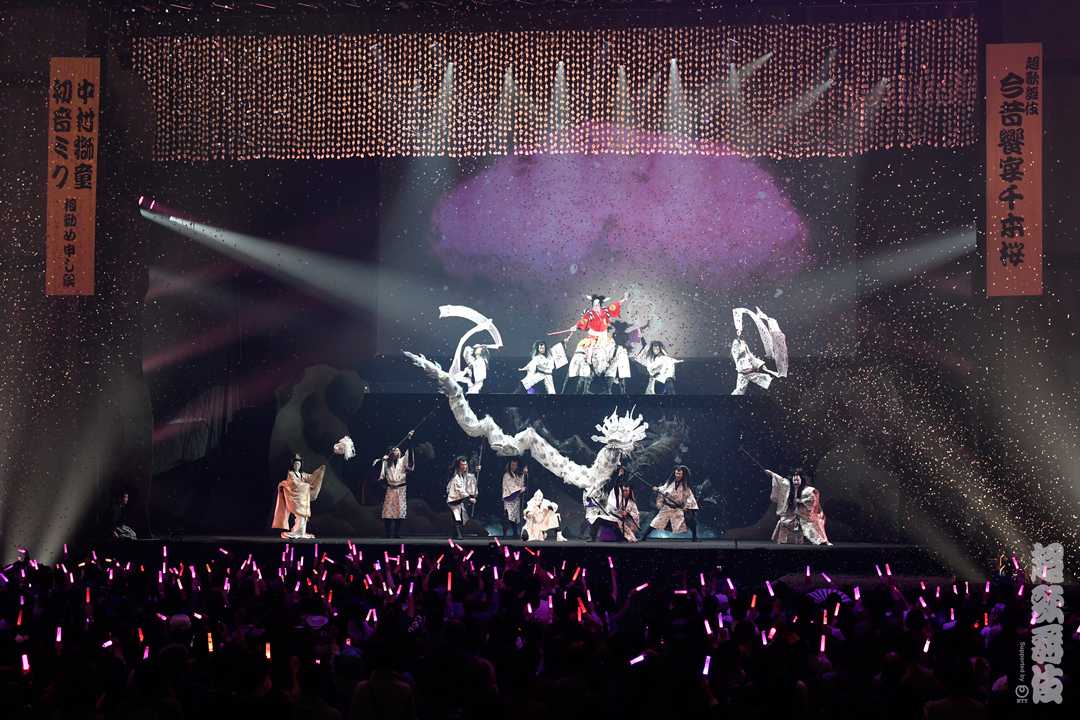Sound Adventures début at Cho Kabuki
- Details

When the ‘Cho Kabuki supported by NTT’ event was held recently at Makuhari Messe Event Hall in Chiba, Martin Audio Sound Adventures system made an auspicious Japanese debut. This is known as one of the main event booths of Nico Nico Super Conference, which is annually held in Makuhari Messe during the May public holiday and is designed with the aim of reproducing Nico Nico Video live -described as the melting pot of Japan’s internet.
In addition to the famous Kabuki actor Shido Nakamura, Kuniya Sawamura, Choshi Nakamura, and a ‘vocaloid’, Miku Hatune - who represents the virtual reality world - perform together. It is an interesting composition that combines traditional Kabuki performance with modern technology such as CG, VR, AR, and motion capture.
It was therefore fitting that this year’s Hanakurabe Senbouzakura was performed in a more upgraded version than in its premier year, providing a backdrop for Sound Adventures to show its ability to move audio objects in space.
Martin Audio loudspeakers, in combination with Astro Spatial Audio software and processing, combine to produce an immersive 3D sound field - a fully object-based immersive audio. The proprietary SARA II rendering engine turns audio inputs (pre-recorded material, audio console, mics) into audio objects by adding metadata such as level; spatial position; acoustic characteristics; velocity; distance and point source or plane wave.
Iwao Tsurusawa, director of MSI Japan, one of the country’s leading PA companies, states: “Cho Kabuki is trying very advanced things with a combination of cutting-edge technologies in video and production methods, led by NTT, Dwango and Shochiku.
“However, looking at the previous three shows, we have used a conventional stereo setting for the PA. This year, we suggested to production company, NATiON, a more challenging solution using the new Martin Audio Sound Adventures, knowing it would be a perfect solution for the audio. The production team was also very keen trying new things to make the performance better, so this request was accepted.”
In this setting, in addition to front L/C/R flying rigs (and rear L/R), four point-source loudspeakers on pole mounts per side were used as side channels. The main L/R hangs consisted from of eight MLA per side, eight MLA Compact in the centre array, eight WPM at the rear arrays per side, and eight DD12 as the side channels.
The core of the Sound Adventures' SARA II engine is located under the stage, and all signals were delivered via a Dante audio network. A total of four Auvitran AudioToolBox were used for Dante distribution for the various locations, and eight DD12 on the wall were connected using AES3 via Audinate AVIO. The Martin Audio WPMs at the rear were powered by Martin Audio iK42 multi-channel DSP power amplifiers which, with its Dante input, made it very convenient for remote installation. The three Martin Audio MLX subwoofers were installed side by side so that they would not disturb the stage passage.
(Jim Evans)
















